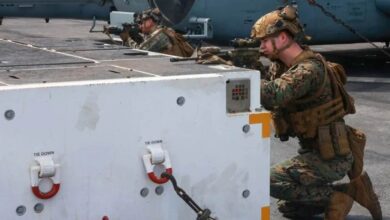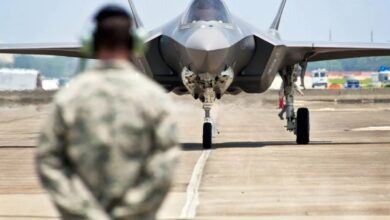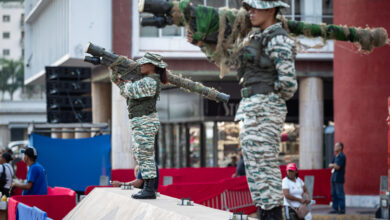America’s New Supercarrier Heads South: Power, Symbolism, and the Shadow of Venezuela
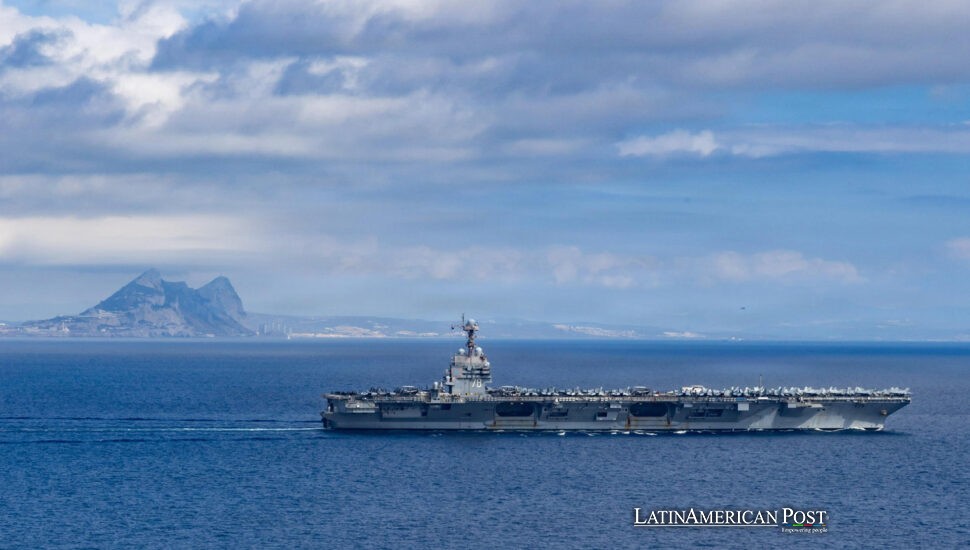
The USS Gerald R. Ford, America’s most advanced aircraft carrier, has turned its prow toward the Caribbean under the banner of a counter-narcotics mission. Officially, it’s a deployment to help “detect, monitor, and dismantle illicit actors.” Unofficially, it’s a message—a colossal one—visible from Caracas to Bogotá. For a vessel built to project U.S. power across oceans, sailing into the hemisphere’s most politically charged waters is less about chasing smugglers and more about reminding adversaries, especially Venezuela, of who still dominates the sea.
A Supercarrier Sails Under a Counter-Narcotics Flag
When Washington announced that the Ford would join anti-drug operations, even seasoned diplomats blinked. Supercarriers rarely leave home for such missions. Their very presence changes the meaning of the water around them. At 100,000 tons and longer than three football fields, the Ford carries an air wing capable of 200 daily sorties, electromagnetic launch systems for drones and jets, and a nuclear heart that lets it circle the globe without refueling. It is, by every measure, an instrument of war—not of quiet policing.
Yet there it goes, steaming south under the counter-narcotics flag once reserved for nimble patrol craft, Coast Guard cutters, and intelligence planes tracing the wakes of go-fast boats. To the untrained eye, the assignment sounds routine. To regional observers, it looks like deterrence wrapped in an interdiction brief. “Moving such a significant element of U.S. combat power is meaningful for the strategic commitment it implies,” analysts at CSIS stated in a report. The Ford’s silhouette—bristling radars, whirring elevators, decks stacked with fighters—broadcasts assurance to partners and unease to adversaries.
The official narrative says the carrier is joining a hemispheric effort to stop the flow of cocaine. The unspoken truth, as every strategist knows, is that its most splendid cargo is symbolism.
Hardware Built for Projection, Not Pursuit
Onboard, the Ford hums like a small city. Its twin reactors generate 25% more power than any previous U.S. carrier. Eleven electromagnetic elevators deliver ordnance to the flight deck in seconds. Its radar suite can spot a hostile aircraft hundreds of miles away. Its electromagnetic catapults fling 30-ton jets skyward with digital precision. But none of that helps catch a fiberglass skiff laden with cocaine darting between mangrove islands.
“The administration attributes the deployment to counter-narcotics operations,” CSIS noted. “Some of the carrier’s broad capabilities can contribute, but overall, these ships are not well-suited to surveillance tasks. They are built for airstrikes and amphibious support.”
That mismatch is the point. The Ford isn’t hunting traffickers—it’s casting a shadow big enough for them and governments to see. Against a backdrop of worsening regional tensions and U.S. anxiety over Venezuelan military drills, the ship’s presence becomes theater with consequences. Each takeoff, each image from the flight deck, each radar sweep across contested waters adds another verse to the geopolitical script.
Regional Friction And The Venezuela Factor
No one reads the script more closely than Caracas. President Nicolás Maduro has long portrayed U.S. interdiction missions as stalking horses for invasion or regime change. A supercarrier patrolling within reach of Venezuela’s coast feeds that narrative. Whether Ford’s pilots ever see Venezuelan airspace is almost irrelevant—the optics alone do the talking.
The move also squeezes Colombia, Washington’s closest counter-narcotics ally, into an awkward corner. Bogotá must welcome U.S. cooperation without looking like a proxy staging ground. Every radio hail to a suspicious vessel, every interdiction photo with the Ford in the frame, becomes a political calculation.
For smugglers, the carrier is mostly noise. Their networks adapt faster than deployments. But for regional militaries, it’s a signal of calibration: the U.S. can still redirect strategic assets south while juggling crises in Europe and the Indo-Pacific. “Deployments of this magnitude are less about intercepting drugs than about demonstrating global reach and regional commitment,” CSIS experts noted.
Still, the danger lies in misreading intent. A single close pass or misfired warning flare between the Ford’s escorts and a Venezuelan patrol boat could spiral from misunderstanding into diplomatic fire. In Latin America, perception is as strong a current as any tide.
What A Real Win Would Look Like
If the carrier’s voyage is mainly strategic theater, success will hinge on what happens quietly behind the curtains. The U.S. could use Ford’s advanced communications suites to fuse intelligence, coordinate smaller patrols, and stage wide-area maritime surveillance that actually feeds interdictions. Its presence could also anchor humanitarian and disaster-response training—roles Caribbean partners already value during hurricane season.
Equally vital is messaging. Washington must assure regional governments that the carrier’s arrival protects shared waters, not sovereignty. Clear rules of engagement are essential to prevent an encounter that Caracas could twist into propaganda.
But no amount of tonnage will alter the root math: cocaine shipments move because demand pays. The Ford can project power; it cannot project treatment programs, functioning courts, or rural alternatives to coca farming. That gap ensures traffickers will keep testing the currents long after the ship’s wake fades.
“The operational center of gravity is deterrence—reassuring partners, warning adversaries, and showing that the United States can still move consequential pieces on the hemisphere’s chessboard,” CSIS concluded.
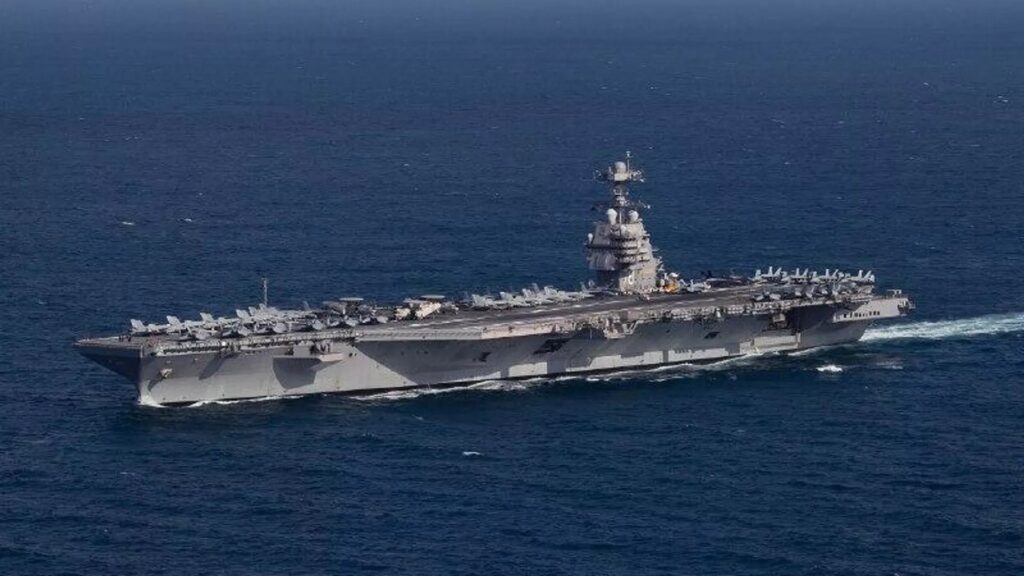
Wikimedia Commons
The Carrier As Message, The Mission as Mirror
In the end, the USS Gerald R. Ford sails less as an answer than as a mirror. It reflects both Washington’s intent to reassert its presence in the Americas and its struggle to define what that presence achieves. For allies, the sight of the Navy’s newest supercarrier might inspire confidence. For others, it may confirm old suspicions.
Whether this show of force steadies the Caribbean or stirs it depends on the choreography ahead—on how the White House tunes its rhetoric, how closely commanders manage the encounter zone, and how quickly the region sees results that look like security rather than spectacle.
Also Read: Mexican Math and Moonlight: How the Maya Coded the Eclipse Clock of the Dresden Codex
Venezuela will hear the Ford before it sees it: the deep thrum of engines rolling through humid air. What that sound means—a warning, a reassurance, or just the echo of an old habit—will depend on who listens, and how the next move is played on this crowded board of water, power, and perception.



